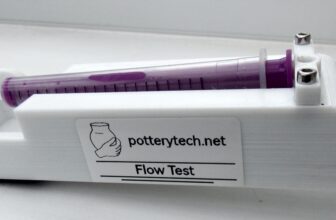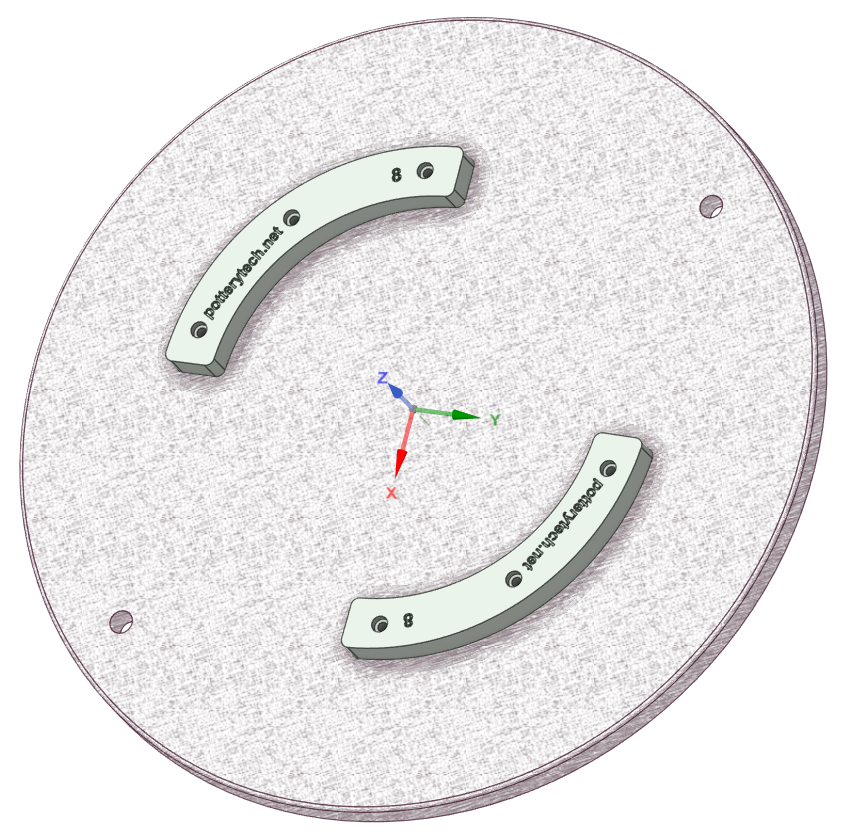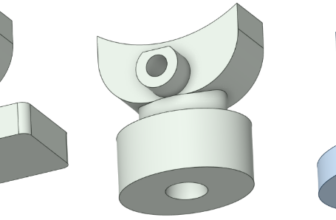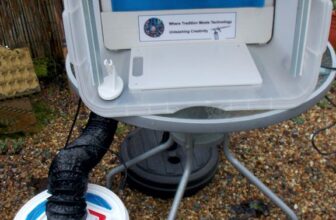The 2025 update introduces numerous advancements to this version, with a key highlight being the introduction of a brand new White base that simplifies the leveling process for users.
One major improvement is the complete redesign of the scale platform, which has been carefully engineered to enhance its functionality. Among the notable features included in this update is the clever addition of reference pin markers, along with a newly designed white mounting gauge that provides a designated area for users to easily place these reference pin markers. This thoughtful innovation significantly simplifies the process of achieving precise measurements and making necessary adjustments, which in turn enhances the overall user experience.
Moreover, this update features an exclusive element that has not been previously found on any torsion viscometer. This design was led by Michael G Parry-Thomas.
Additionally, the platform is now constructed as a single module through 3D printing to ensure precision. The mechanism for mounting the platform has also been enhanced, incorporating an aluminum collar that boosts the overall durability and stability of the scale.

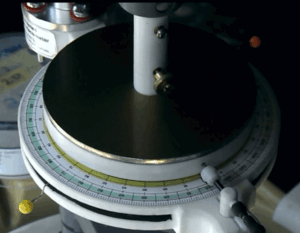
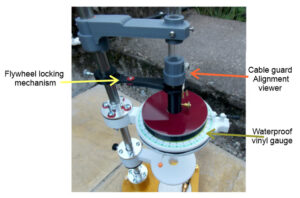
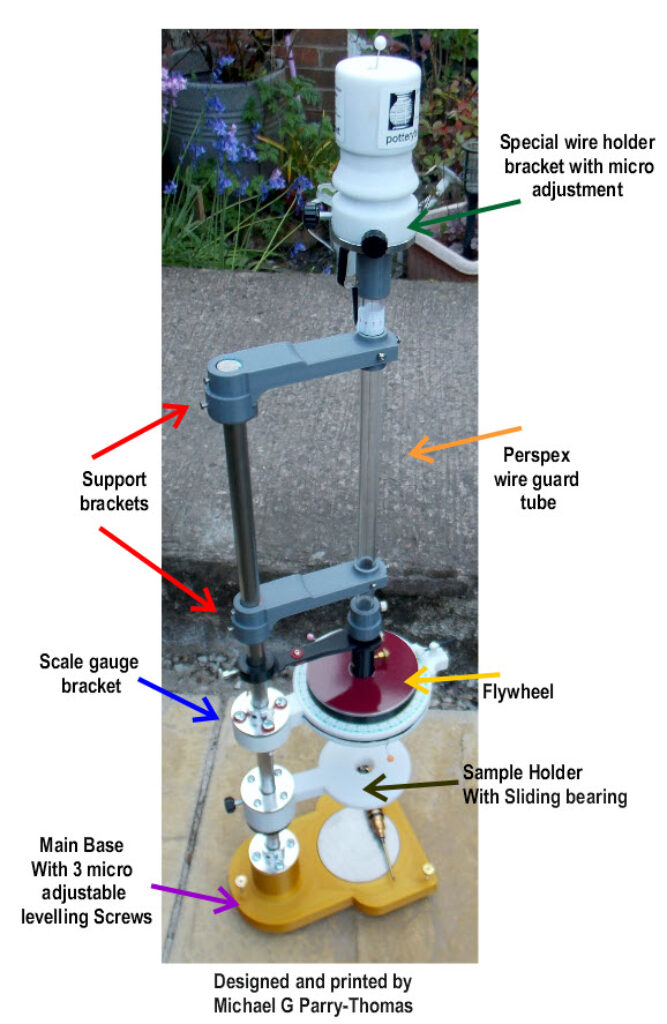
3D Printed Torsion Viscometer
for determining the viscosity of ceramic Pottery Glaze – casting Slip
Christmas 2022 I received a Voxlabe Aquila X2 3D printer from my family. One of my hobbies is making ceramic pottery for family and friends. Having a 3D printer means I can design my own tools to use with my Hobby ceramics. I’ve never done any 3D printing or using any CAD software in the past I have done many different printing processes. One area I specifically specialised in was ceramic silkscreen printing. This did give me an. advantage as in the past I was always using different types of machinery from hand printing machines to fully automated and there are settings on these machines were very similar to 3D printing.
You can buy ceramic glazes in powder form and in ready mixed brush on glaze I wanted something where I could measure the viscosity using a laboratory instrument as with anything like this type of equipment can be very expensive I decided to use my 3D printer to make a fully working Torsional viscometer. The viscometer is very accurate and every part can be replaced and upgraded.
- Parts not printed consist of :-
- Purchased from eBay
- 1. Stainless steel shaft.
- 1. Perspex tube.
- 1. Flywheel Top stainless Stainless steel disc.
- 1. Sample cup small stainless steel disc.
- 1. Small disc in the base. Thumb screws bolts. (Brass – stainless steel)
- 1. 30swg torsion viscometer wire (This has been made in house – wire ends are designed to be reused)
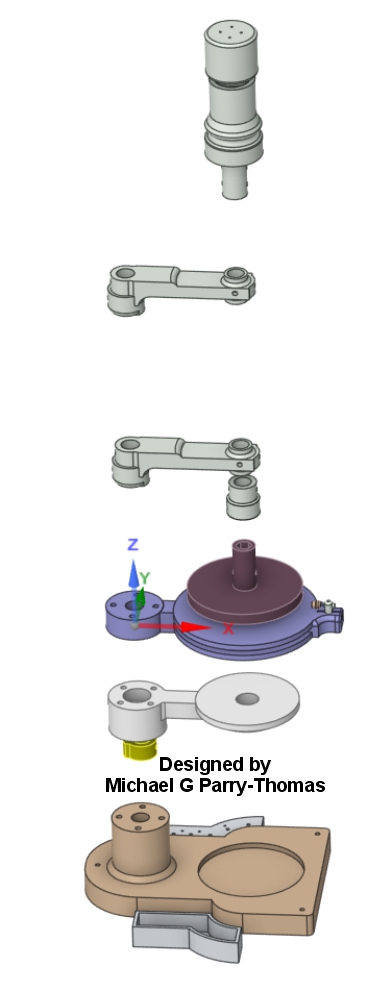

Viscometer accessory box
- Printed parts:-
2. Support brackets ………………… (Hold the Perspex wire guard tube) - 1. Scale gauge bracket ……………. (Hold the printed vinyl scale)
- 1. Sample holder bracket …………. (Allows the sample to be held in position)
- 1. Sample stop ………………………… (This stop allows you to set the sample bracket height)
- 1. Main base ……………………………. (The main base has 3 micro adjustable levelling)
1.wire holder ……………………………. (Special wire holder bracket with micro adjustment)- 1.Adapter ring ………………………….. (This was added so you could use a commercial spring wire)
- 1.Sliding centring wire guard …….. (This allows you to slide section of the wire guard to assist in levelling)
- 1.Flywheel ……………………………….. (Customisable can add stainless steel weight discs, brass locking screw for securing bobs)
- 1.Flywheel locking mechanism …… (Fully adjustable indicator pointer locking holder)
2.Accessory trays …………………….. (designed to locate on the side of the main base to store any Allen keys and also bobs
1.Waterproof vinyl gauge…………… (can also be used with removable logging dial)
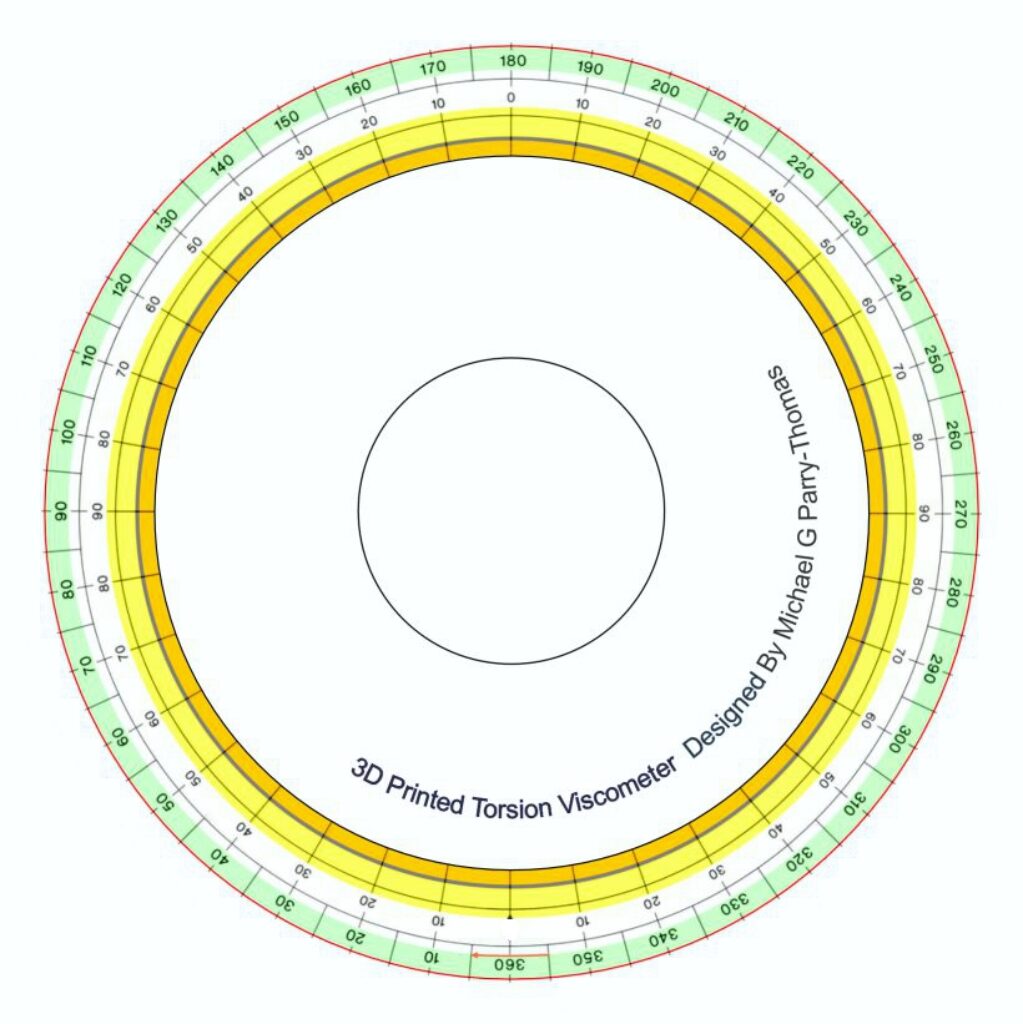
The scale was created using Front Designer 3 then imported into CorelDRAW
- Features
Levelling:-The instrument has 3 brass levelling adjusters (The printed base has double brass inserts holding each of the thumb brass micro levelling adjusters )
Wire adjustment zero calibrating:- (The top wire housing holder has an adjustment ring which you use to turn the flywheel pointer to calibrate to the zero mark on the scale. This is then locked in place with two thumb locking screws.
Cable guard Alignment viewer:-(This is located at the end of the Perspex wire guard the function is to allow you easy access to connect the wire to the flywheel and gives you a visual aid on aligning the instruments flywheel .When the instrument is level and the dial indicator is reading zero on the gauge you slide down the cover and lock in place with a thumb screws .
Sample Bob:-(Installing and changing the sample Bob is done by using a brass thumbscrew- Sample cup Holder:- The sample cup holder has been designed so the sample can be raised Vertical and locked into place with a thumbscrew .There is also an additional locking ring stop this is used so you can adjust the height of the sample cupholder this allows more flexibility when positioning your sample.




